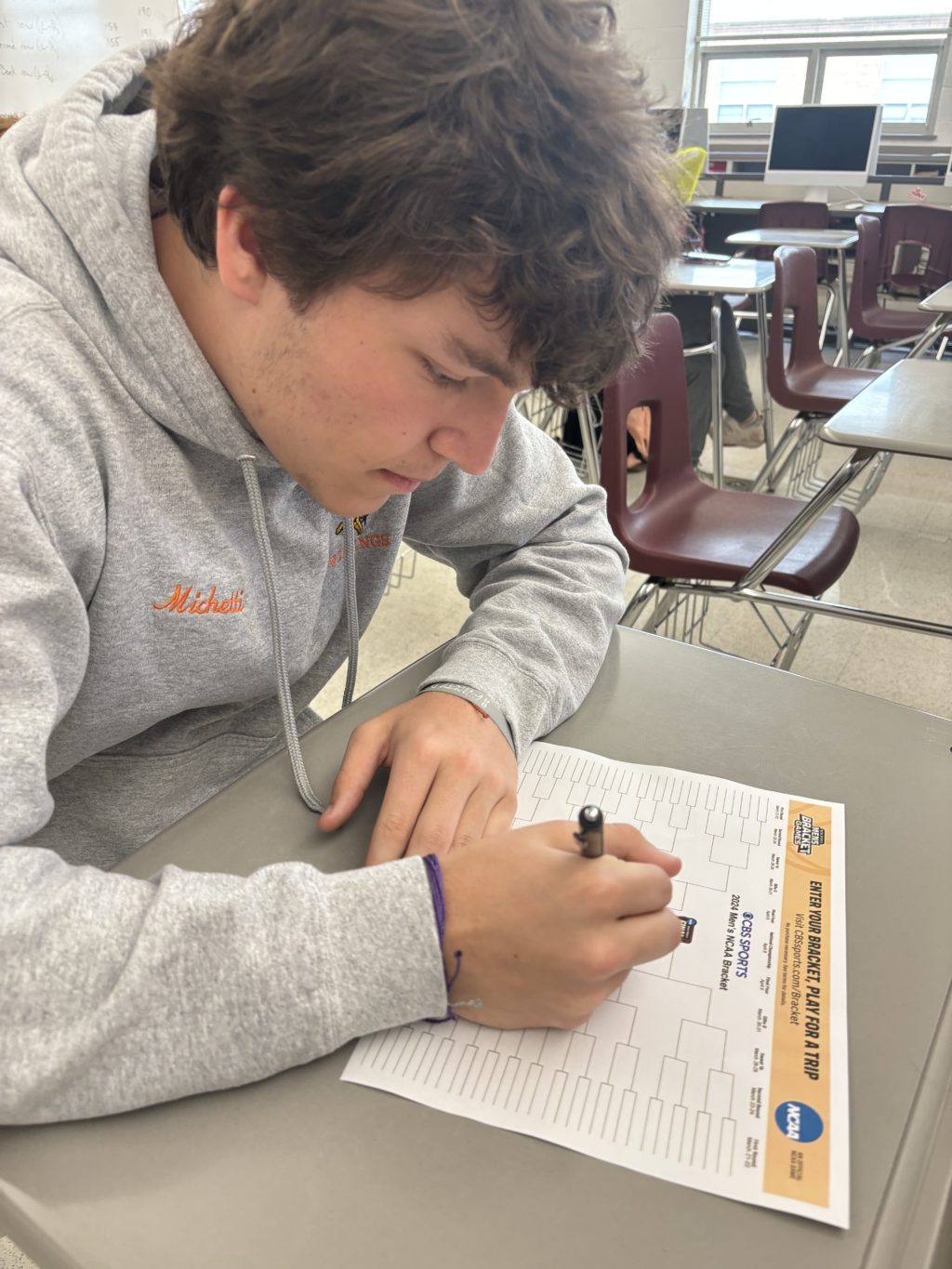Madness is quickly approaching and every basketball enthusiast, player and coach is eagerly awaiting March 19th. March Madness is a 64-team playoff separated into four groups. Within each group, teams are ranked from one seed to 16 based on their performance in the regular season. Initially this may seem straightforward, but what may not be widely known is that there is an average of 12.4 upsets, underdog victories, every year.
Every year, millions of people fill out a bracket for the NCAA tournament. No one has gotten a verifiably perfect bracket in the 85-year history of March Madness—it’s safe to say the odds are most definitely not in anyone’s favor. There is a one in 9,223,372,036,854,775,808 chance to predict a perfect bracket solely from guessing or flipping a coin. The odds are slightly more in your favor if you know a thing or two about basketball with a 1 in 120.2 billion chance. Although it’s virtually impossible to fill out a perfect bracket, millions take a shot at it every year. In fact, a total of 15.5 billion dollars was bet during last year’s tournament.
Small schools greatly look forward to this month because by winning their conference, even in lower-level divisions, they are given an opportunity to play in the tournament, typically as a 15 or 16 seed. In March Madness history of the 1v16 matchups, the one-seed teams have won two times and lost 130. The two upsets occurred when Fairleigh Dickinson University (FDU) defeated Purdue and the University of Maryland Baltimore County (UMBC) defeated Virginia.
March Madness games generate substantial revenue for the colleges, even after three weeks of televised game time. The FDU athletic department was losing nearly $4 million with a comparatively lower budget of roughly $14 million. But with the win against Purdue, the school’s funds skyrocketed. With the increase in revenue, they were able to renovate seven locker rooms, open a new weight room, and add 101 new athletes to their roster, up from 246 during the 2018-19 season.
Due to March Madness’ massive viewership, players are able to showcase their elite performances and effectively put their names on the map. Some of the most notable names in basketball, like Kemba Walker and Stephen Curry, become the athletes they are today through their unparalleled plays. Last year, Indiana player Trayce Jackson-Davis’ draft stock skyrocketed after becoming the first player in NCAA tournament history to record a 20 points, 10 rebounds, five blocks and five assists game. He continued to display the full force of his athleticism in a game against Miami, where he scored 23 points, grabbed eight rebounds, blocked five shots and dished out an assist. Yet another March Madness success story is that of UCLA Guards Jaime Jaquez Jr. and Johnny Juzang. The duo boosted their stock and became star players on a final-four team by securing a Cinderella run, an unexpected win by a low-seeded team.
Now it wouldn’t do justice to March Madness history without mentioning when the 11-seed Loyola Chicago made it to the final four, which was, without a doubt, the most magical Cinderella run of them all. The Loyola Ramblers’ success earned $8.5 million for their 10-team Missouri Valley Conference to be paid by the NCAA over the next six years. Since their 2018 Cinderella run, the team gained much popularity and caused another upset in 2021.
As we have seen throughout March Madness history, the outcome is never guaranteed. So while you prepare your bracket, keep in mind that a Cinderella run could very well be on the horizon.
